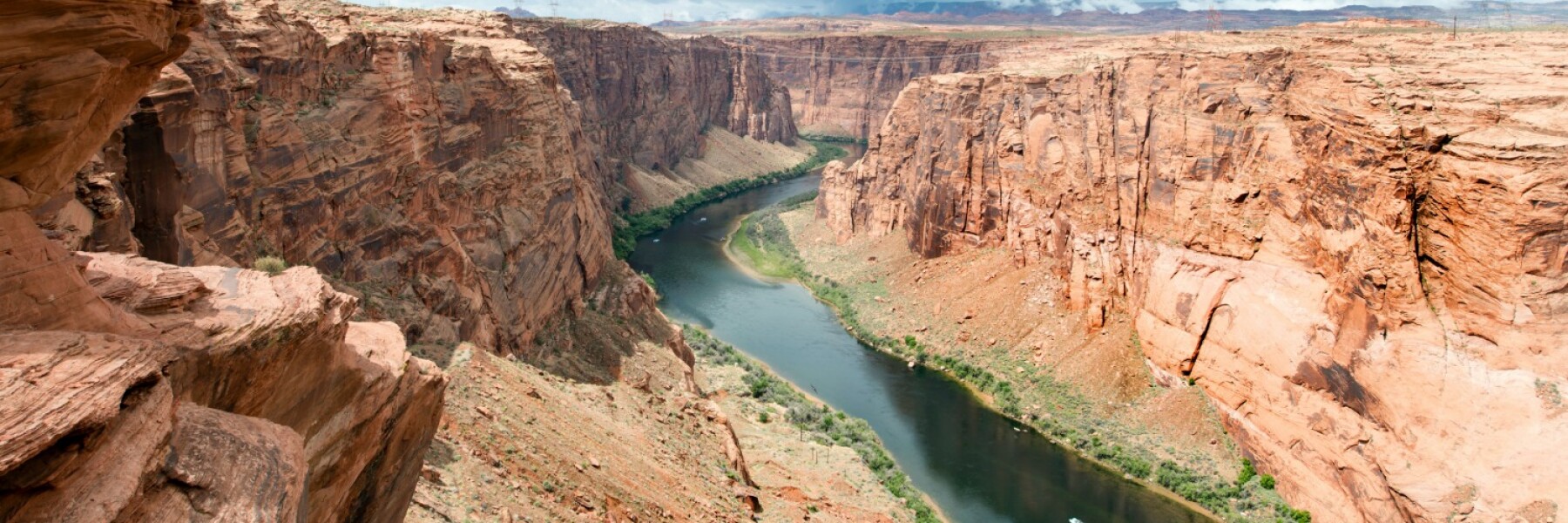Ted Kowalski is a senior environment program officer who joined the Walton Family Foundation earlier this month and leads our Colorado River basin initiative.
How would you describe the water rights system in the West and its importance to stakeholders who aren’t as familiar with the issue?
The reason water is so important to people in the West is because, in most years, water demands exceed water supplies – whether on a specific, small stream, or in a major watershed, like the Colorado River basin. In this region, there is a complicated set of state and federal laws, as well as interstate agreements and international treaties that determine how to share water among users across state lines and between countries. As water demands grow, and water supplies remain uncertain from year to year, water managers will have to be more creative and flexible to meet demands.
What initially sparked your interest in water issues?
I went to the University of Colorado School of Law primarily because of its nationally-recognized natural resources program. I had worked for a large law firm doing legislative analysis and really wanted to focus my career on having a broader impact, and I knew I wanted to work on environmental and natural resources law. During my first year at UC, I was selected to be a research assistant for David Getches, a renowned water law expert. It was so interesting to me that I never looked back – I knew I wanted to work in the field of water law.
What do you see as one or two of the most promising solutions to address the challenges facing the basin?
Water markets and water reuse are two very promising tools. Water markets already have proven to be effective in the lower basin. For example, California water entities have conserved water for years and stored this water in Lake Mead in bank accounts known as Intentionally Created Surplus (ICS) accounts. Last year, when the drought hit northern California particularly hard, water users in the state were able to draw down their ICS accounts to survive the drought. This flexibility also has been applied to allow Mexico, under an agreement between the U.S. and Mexico, to store conserved water in U.S. reservoirs in a special allocation account, and that water can be used when Mexico requests it.
That kind of flexible arrangement is something we’ll want to see more of in the future for both the upper and lower basins. In addition, water reuse strategies have improved dramatically in some areas over the last decade, but these strategies can be applied and improved in other areas. Las Vegas, in particular, has greatly improved both efficiency and reuse throughout its service area.
How do you think those solutions can also help support habitat restoration and healthy rivers in the basin?
Preserving healthy rivers and restoring riparian habitats that benefit the communities and businesses that surround them is a critical component of the foundation’s work in the region. We are supporting habitat restoration work in key priority tributaries as demonstration projects to show how healthy rivers can function when they have adequate water supplies and strong management. The habitat restoration work and the more comprehensive basin solutions, described above, must go hand in hand in order to sustain healthy rivers over the long term.
With all of the trips you’ve taken throughout the basin over the years, which were the most memorable?
I have two river trips that come to mind. One of my favorite trips was floating the Yampa River as part of my work a couple of years ago, where I joined dozens of water professionals to learn about issues the basin faces. Also, shortly after taking the bar exam, I floated the Colorado River in the Grand Canyon on an inflatable ducky, which was a life-changing experience. There is something about the remoteness of floating the Colorado River through the Grand Canyon that makes the experience magical and inspirational.
What are you looking forward to most in your new role at the Walton Family Foundation?
I’m looking forward to continuing to develop collaborative and cooperative solutions to the Colorado River basin’s future challenges. Given the critical role that the Colorado River basin plays in the economy and future of the western U.S. and the water demand/supply imbalances we are facing, we will have to find ways to allow all sectors to have more secure water supplies, from agriculture and urban areas to the environment. I’ve spent my career developing solutions to water problems at the state-level in Colorado, and I am excited to work on solutions from a new and broader perspective.




